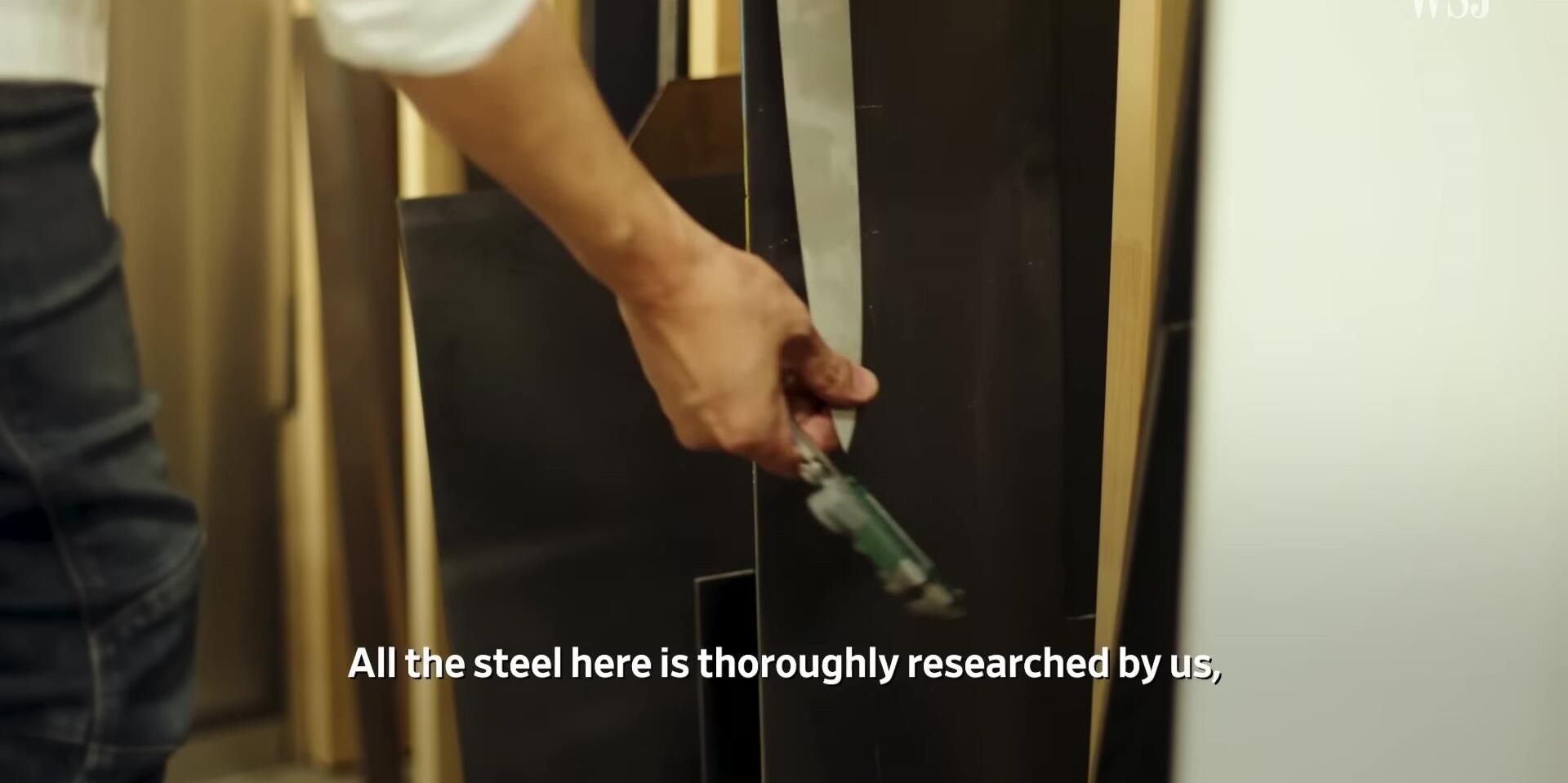The art of sushi transcends mere culinary skill; it's a precise dance of technique and tool mastery. At its heart lies the sushi knife, a critical instrument demanding both exceptional quality and unwavering precision. This article delves into the world of Japanese sushi knives, exploring the dedication and artistry behind their creation. We'll journey into the meticulous process, from the selection of superior materials to the final, painstaking sharpening, revealing the secrets of a master craftsman's unwavering commitment to perfection.This isn't simply a story about knives; it's a narrative of passion, innovation, and the enduring legacy of Japanese craftsmanship. We'll meet Sawada-san, a revolutionary figure who blends traditional methods with modern advancements, pushing the boundaries of knife-making. His journey, along with the detailed process of creating these exquisite tools, showcases the dedication and skill that transforms a simple blade into a work of art—an investment reflecting not only quality and function, but also a commitment to an ancient and revered tradition.
Pros And Cons
- Fully customizable
- Made from a single piece of stainless steel
- Even ingredient distribution for uniform material structure
- Improved bite due to steel's viscous nature and fibrous texture
- High precision shaping
- Finer fibers when cutting due to blade design
- Beautiful appearance (resonance finish)
- Extremely high maintenance (resonance finish)
- High cost due to time-intensive manufacturing process (one knife per day for resonance finish)
Read more: Top 10 Damascus Sushi Knives: Ultimate Guide
The Importance of the Knife in Sushi Preparation
The art of sushi making hinges on precision and the quality of the tools used. A superior knife is paramount, ensuring clean cuts that preserve the fish's delicate texture and flavor.
The sharp blade allows for precise cuts, minimizing damage to the fish fibers. This results in a superior eating experience, with each bite exhibiting the fish's natural quality.
Traditional Japanese sushi knives, often crafted from high-carbon steel, are highly prized for their exceptional sharpness and performance. However, these knives demand meticulous care and maintenance.
Challenging Traditional Methods
Sawada-san, a dedicated craftsman, is revolutionizing the perception of Japanese knife-making. He's pushing boundaries and challenging traditional methods, exploring new materials and techniques.
He's been called a 'mad scientist' for his relentless pursuit of perfection. His dedication to innovation and pushing the limits of the craft is noteworthy.
His approach blends traditional Japanese craftsmanship with modern technology, ultimately resulting in knives that are both aesthetically pleasing and functionally superior.
The Craftsmanship and Materials
The creation of these exceptional knives is a multi-stage process. It begins with the selection of high-quality stainless steel, meticulously crafted into a block.

The steel block undergoes a series of precise hammering and heat treatments to create a uniform and durable structure. This ensures the final product exhibits exceptional hardness and sharpness.
Each knife is handcrafted, a testament to the skill and dedication of the artisans involved. The meticulous attention to detail is evident in every aspect of the blade's construction.
The Finishing Touches and the Pursuit of Perfection
The final stages of knife-making involve meticulous sharpening and polishing. This requires considerable skill and patience, ensuring a razor-sharp edge.

The handle is carefully crafted for balance and comfort. This attention to ergonomics contributes to the overall user experience. The blade’s curvature is another defining feature.

The result is a knife that is not only exceptionally sharp but also aesthetically pleasing. The final product is a work of art, reflecting the dedication and skill of the artisan.
Conclusion: The Value of Handcrafted Excellence
These knives aren’t just tools; they’re investments in quality, artistry, and a commitment to tradition. The high cost reflects the extensive time and skill involved in their creation.

While mass-produced knives may be more affordable, they lack the precision, balance, and artistry of a handcrafted piece. The unique character of each knife is part of its appeal.

The value of these knives lies not only in their exceptional performance but also in their unique beauty and the story they tell of dedication and mastery. They are, in essence, works of art.
